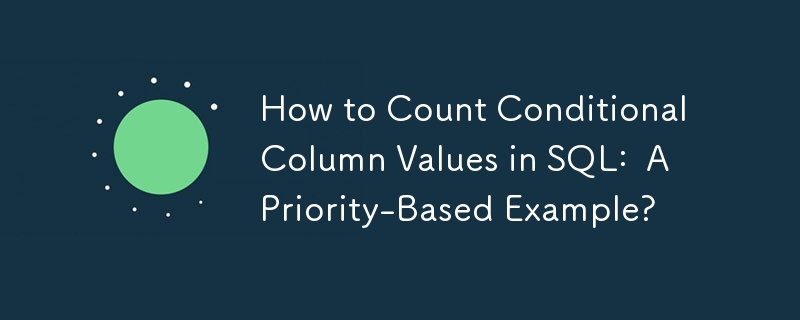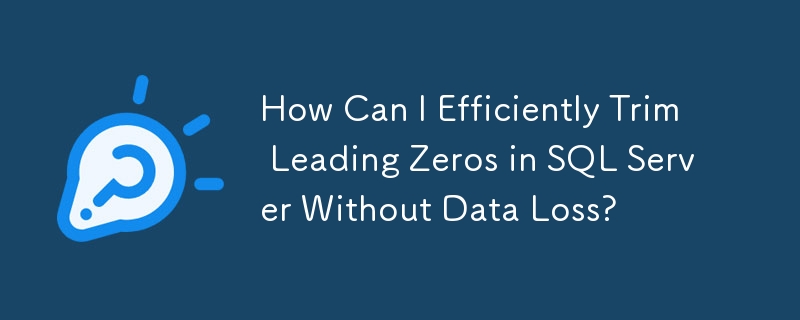Found a total of 10000 related content

How Can I Ensure Unique Random Numbers in C#?
Article Introduction:Seeding a Random Class for Unique ValuesIn your code, you have a static instance of the Random class, which generates a sequence of random...
2025-01-05
comment 0
1159


Angular 2 Components and Providers: Classes, Factories & Values
Article Introduction:Core points
Angular 2 components are able to use providers, a set of injectable objects that components can use. Providers are the basis of Angular 2 Dependency Injection (DI) systems.
Providers can be divided into three types: class provider, factory provider and value provider. The class provider generates an instance of the class, the factory provider generates the return value of the specified function, and the value provider directly returns its value.
Angular 2's DI system allows registering classes, functions, or values ??(called providers), addressing dependencies between providers, making the provider's results work in code, and maintaining the injector hierarchy.
Angular's injector creates only one
2025-02-15
comment 0
763
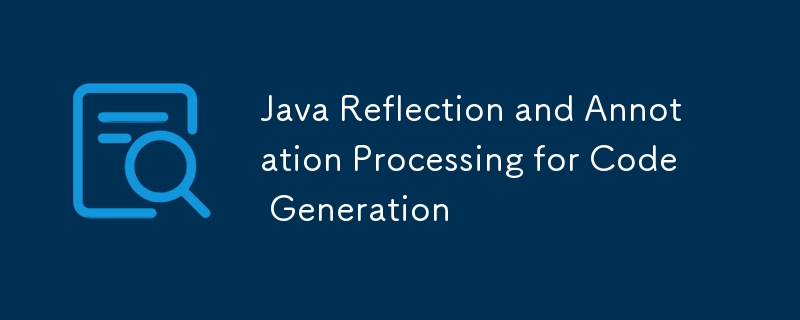
Java Reflection and Annotation Processing for Code Generation
Article Introduction:The core of using Java reflection and annotation to generate code is to clarify its applicable scenarios and steps: 1. Reflection is used to dynamically obtain the class structure at runtime, suitable for generating logical code based on class information at runtime. Common operations include Class.forName, getDeclaredFields and getAnnotation; 2. Annotation processing generates code at compile time, and generates Java files by implementing AbstractProcessor and process methods, which is more suitable for performance-sensitive and IDE-supported scenarios; 3. Choice is determined based on requirements: reflection for dynamic loading at runtime, and efficient code generation at compile time with annotation; 4. Common problems include not triggering the processor and not compiling the generated code. Generate the code without compilation; 3. Selection is determined based on requirements: reflection for dynamic loading at runtime, and efficient code generation at compile time; 4. Common problems include not triggering the processor and not compiling the generated code.
2025-07-17
comment 0
480

What are Java Records (Java 14 )?
Article Introduction:JavaRecord is a feature used to simplify data class declarations, introduced from Java 14. It automatically generates constructors, getters, equals, hashCode and toString methods, which are suitable for DTO, model classes, multi-return value encapsulation and other scenarios; it is not suitable for situations where inheritance, mutable state or complex logic is required. Notes include: default is final class and fields, support for adding methods and static fields, and Java16 supports pattern matching. For example, recordPerson(Stringname,intage){} can replace the traditional POJO class and improve the simplicity and maintenance of the code.
2025-07-05
comment 0
846
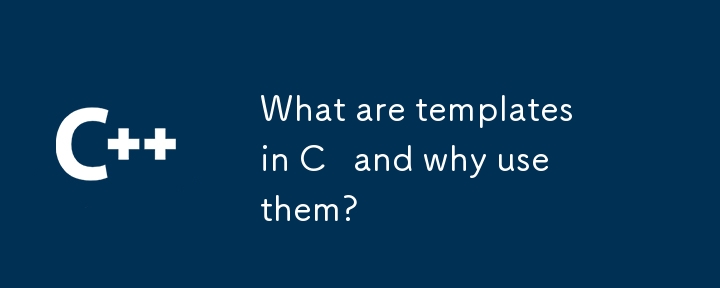
What are templates in C and why use them?
Article Introduction:C templates implement code reuse and type independence through generic programming. 1. The template allows the use of placeholders to define functions or classes. The compiler generates corresponding code based on the actual type to avoid duplicate logic; 2. Function templates such as swap can be adapted to any data type to improve maintenance; 3. Class templates such as Stack support the construction of general containers, and logic is decoupled from type; 4. Template instantiation is divided into implicit (automatic) and explicit (manual), ensuring that only the required type code is generated; 5. The template completes type checking during the compilation period, without runtime overhead, and has both type safety and high performance.
2025-07-13
comment 0
701
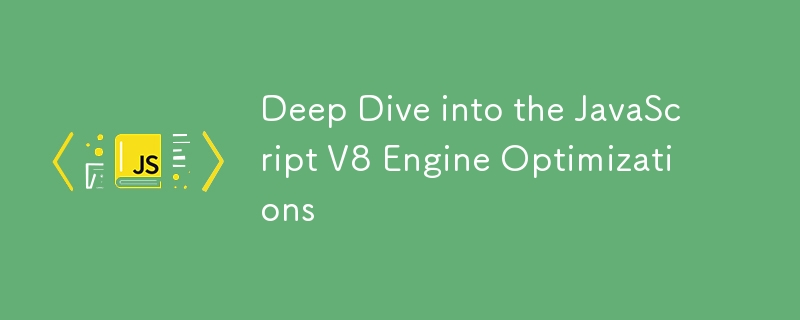
Deep Dive into the JavaScript V8 Engine Optimizations
Article Introduction:The core of V8 engine's efficiency lies in optimization mechanisms such as hidden classes, inline cache and JIT compilation. 1. The hidden class speeds up the access of attributes by sharing the class information of objects with the same structure. It is recommended to initialize object properties in a fixed order. 2. Inline cache records method call information, reusing the results to improve function execution efficiency, and the parameter transfer structure should be consistent. 3. JIT generates efficient code on hotspot functions and supports dynamic fallback. Avoiding type conversion and prototype modification can improve optimization effect. Additionally, using literals, avoiding deleting properties, manipulating continuous arrays, and using primitive types also helps with performance optimization.
2025-07-21
comment 0
645

Introduction to Java Records for Immutable Data
Article Introduction:JavaRecords is a feature introduced by Java16 to simplify the definition of immutable data model. It is a special class that automatically generates constructors, getter methods, equals(), hashCode() and toString() methods for fields to reduce redundant code; it is suitable for use in scenarios such as data transfer objects (DTO), JSON serialization model classes, function return packaging, etc.; it is not suitable for situations where complex logic, inheritance interfaces, field default values or verification logic are required; verification logic can be added through a compact constructor, such as checking non-negative age; Record naturally supports immutability, improves development efficiency and code readability, and has significant advantages in suitable scenarios.
2025-07-14
comment 0
911

Using the `resource` route in Laravel.
Article Introduction:Laravel's resource routing automatically generates the corresponding routes for seven CRUD operations through a line of code. When you use Route::resource('photos',PhotoController::class);, Laravel will create seven routes: index, create, store, show, edit, update and destroy, respectively, corresponding to the methods in the controller, and generate URIs based on the resource name. You can also use only or except methods to specify the generated route, such as only retaining index and show, or excluding create and store; you can also use the parameters method to further
2025-07-18
comment 0
982

How to customize the welcome page in VSCode?
Article Introduction:Personalized customization of VSCode welcome pages can be achieved by installing extensions and custom configurations. 1. Install extensions such as "CustomWelcomePage", edit the index.html and style files it generates, and insert HTML, CSS or JS to change the content of the welcome page; 2. Use the "CustomizeUI" class plug-in to inject custom CSS/JS, and achieve deeper appearance control by hiding original elements or dynamically generating new content; 3. Modify startup parameters such as code--new-window or specified path, and combine with the local server to open the custom page by default. Although VSCode itself does not support it directly
2025-07-28
comment 0
585

What are the different autoloading strategies (PSR-0, PSR-4, classmap, files)?
Article Introduction:PHP's automatic loading methods include PSR-0, PSR-4, classmap and files. The core purpose is to implement automatic loading of classes without manually introducing files. 1. PSR-0 is an early standard, and automatically loads through class name and file path mapping, but because the naming specifications are strict and the support for underscores as directory separators have been rarely used; 2. PSR-4 is a modern standard, which adopts a more concise namespace and directory mapping method, allowing a namespace to correspond to multiple directories and does not support underscore separation, becoming the mainstream choice; 3. classmap generates a static mapping table of class names and paths by scanning the specified directory, which is suitable for legacy code that does not follow the PSR specification, but new files need to be regenerated and large directories
2025-06-20
comment 0
1004

Java Interoperability with Kotlin: A Seamless Integration
Article Introduction:Kotlin can integrate seamlessly with Java because the two run on the JVM and the bytecode is interoperable. The Kotlin compiler automatically generates compatible code to bridge syntax differences and adapts to Java features through language design. 1. Kotlin and Java are compiled into the same JVM bytecode, and classes can be called directly from each other and share classpath; 2. Kotlin uses @JvmOverloads to generate overloaded methods for the default parameters, and the top-level functions are compiled into Java static methods (the class name can be customized through @file:JvmName); 3. Kotlin treats Java types as platform types (such as String!), and needs to manually handle empty security, and supports SAM conversion to La
2025-07-29
comment 0
426
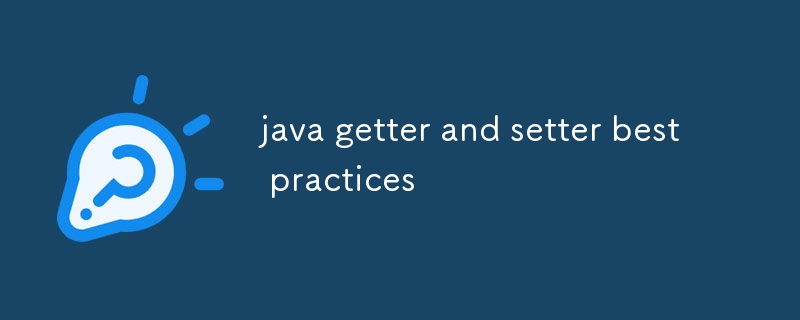
java getter and setter best practices
Article Introduction:In Java development, the rational use of getter and setter methods can improve the maintainability and readability of the code. 1. Naming should follow the JavaBean specification. Getters start with get, boolean type can be started with is, and setters start with set, which is convenient for IDE and framework recognition; 2. Avoid complex logic in the method, which is only used to obtain or set values, and business logic should be placed in constructors or special methods; 3. Decide whether to expose getters/setters according to requirements. Non-essential fields should not be exposed to the public, maintaining the encapsulation and immutability of the class; 4. After using the IDE automatically generates, you need to check whether adjustments need to be made, such as adding logic, ignoring fields or setting read-only attributes; 5.Lomb
2025-07-19
comment 0
333

What is Java Reflection API and its use cases?
Article Introduction:The JavaReflection API allows you to check and operate components such as classes, methods, fields at runtime, so that the code has dynamic adaptability. It can be used to discover class structures, access private fields, call methods dynamically, and create instances of unknown classes. It is commonly found in frameworks such as Spring and Hibernate, and is also used in scenarios such as serialization libraries, testing tools, and plug-in systems. 1. The dependency injection framework realizes automatic assembly through reflection; 2. The serialization library uses reflection to read object fields to generate JSON; 3. The test tool uses reflection to call the test method and generates a proxy; 4. The plug-in system dynamically loads and executes external classes with the help of reflection. However, it is necessary to pay attention to performance overhead, security restrictions, packaging damage and lack of security during compilation period, and should be used with caution to avoid
2025-07-14
comment 0
800
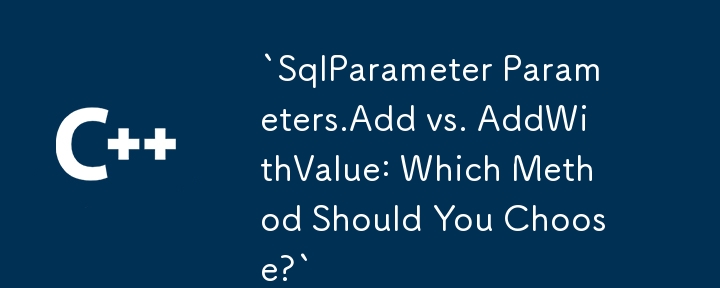

Dave The Diver: How To Catch Spider Crabs
Article Introduction:In Dave The Diver, there are some creatures that are not easy to catch. Or, catch alive that is. The spider crab is one of those very species, making it seem like the only way to bring these crustaceans back up to land is to viciously crack them up w
2025-01-10
comment 0
859

Prepare for Interview Like a Pro with Interview Questions CLI
Article Introduction:Prepare for Interview Like a Pro with Interview Questions CLI
What is the Interview Questions CLI?
The Interview Questions CLI is a command-line tool designed for JavaScript learners and developers who want to enhance their interview
2025-01-10
comment 0
1487
















